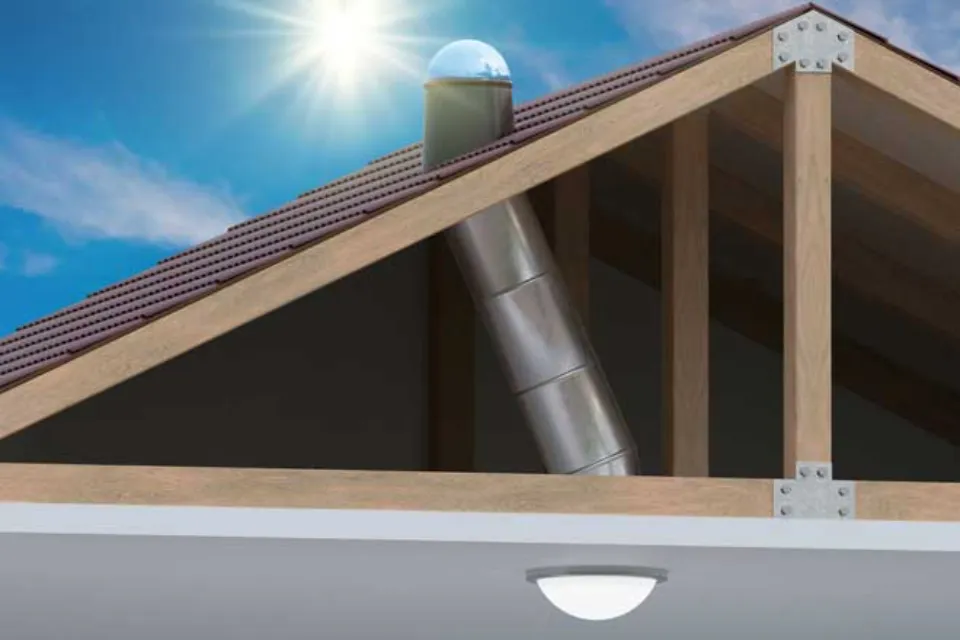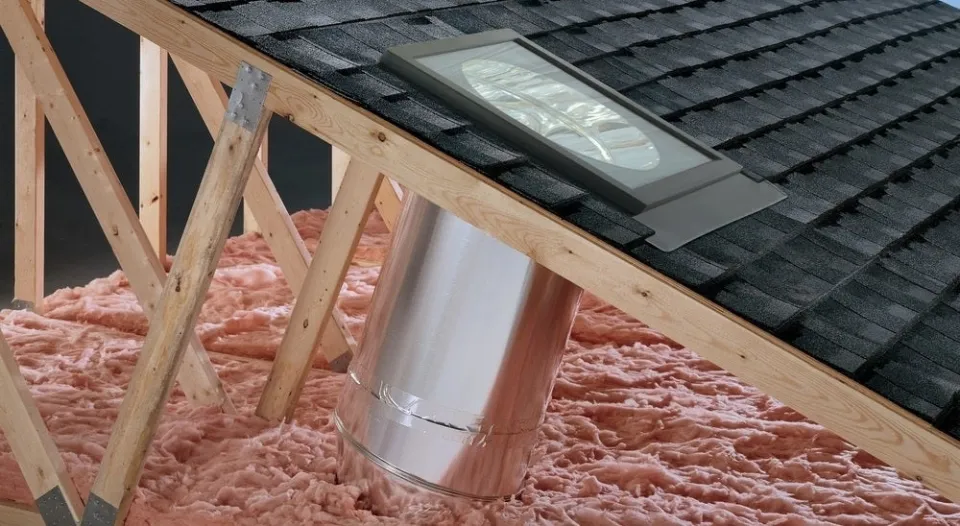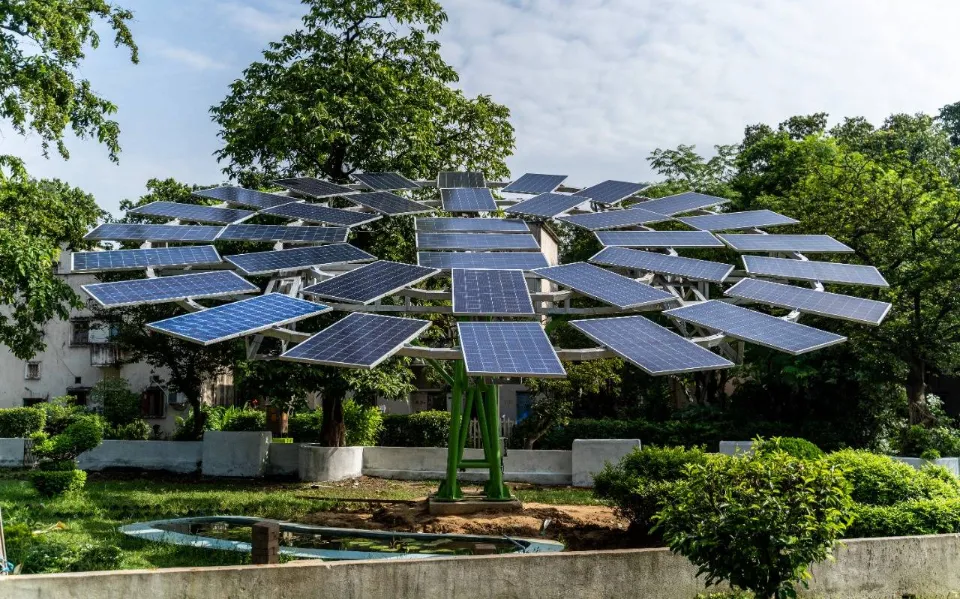Solar tubes help brighten up dark indoor spaces. The following information will help you decide if solar tubes are the right choice for you.
Systems using solar tubes for lighting have gained popularity as contemporary lighting options over time. Additionally, there are advantages and disadvantages to using this eco-friendly option that are related to the limitations of the roof type and the type of home you have.
In this blog, we will explain how solar tubes function, its pros & cons, to help you analyze whether it is right for you.
Table of Contents
What is Solar Tube Lighting?
Solar tube lighting goes by a few different names: sun tube lighting, sun tunnel lighting, tubular skylight lighting and light tube lighting.
Metal sheets with an internal polish are used to construct the tubes.
The interior-facing end of a solar tube light is typically a porthole-style diffuser that directs the light into your home or place of business. The exterior end of a solar tube light is typically sealed with a weather-proof plastic dome.
The tubes also have a shiny interior that reflects light back and forth, creating tunneling that brightens and illuminates most spaces without the use of electricity. The diameter, which is much smaller than a typical skylight, can be between 10 and 14 inches.
How Do Solar Tubes Work?

Solar tube heads are optically engineered to direct as much light as possible into the tunnel below and come in a variety of sizes which range from about 1 to 2 feet in diameter. A transparent, weather-resistant acrylic dome is typically used to protect them.
The tube skylight piping length can be extended indefinitely, and is lined with a super-reflective “continuous mirror” coating to amplify the direct sunlight as it pours through to its target.
The majority of models come with low-profile, flexible tubing, which eliminates the hassle of cutting and fitting sheet metal, which is required for models with rigid solar tubes.
The most well-known solar tube manufacturer is Velux. Instead of being obtrusive domes, their solar tube models resemble tiny skylights recessed into the face of your roof. If you value sleeker aesthetics, give them careful thought.
On your roof, or in the light diffuser at the tube’s end, the majority of sun tubes have a UV ray protection system. This guarantees that the sunlight entering your home won’t have a negative impact on your health or harm surfaces or paintings.
Pros of Solar Tube Lighting
There are a number of reasons why a home or business owner would choose solar tube lighting over other available options.
Natural Sunlight
Solar tubes let in natural light, which is great for controlling mood and health. This is similar to skylights. The natural source of vitamin D, which strengthens bones and aids in sleep regulation, is also found in sunlight. Regular exposure to natural light not only improves one’s health, but also lessens the need for artificial lighting during the day.
Low Installation Costs
Low installation costs are made possible by the simplicity of mounting solar tubes. If you do the job yourself, solar tubes may be installed for less than $500. When compared to conventional electric lighting, the maintenance costs are also lower. There are no concerns about a recurring bill if the installation is done correctly.
Environment-Friendly
Due to their reliance on renewable energy, solar tubes do not produce any harmful gases or accelerate global warming. They are therefore an environmentally sound choice. You can help your community become more energy efficient by using solar tubes to power lights.
It can also be a further tool to assist your family in achieving energy independence by enabling you to run your house entirely off of energy supplied by the power grid of a nearby utility company.
Design Flexibility
Solar tubes provide design flexibility without changing the roof or home’s structure because they are so much smaller than skylights.
For instance, solar tube lighting is a good choice that will also ensure long-term energy and cost savings if you want to add light to smaller areas of your home like the kitchen, bathroom, closets, or hallways.
Cons of Solar Tube Lightning
Problems can arise with solar tube lighting just like they can with any other system you have at your house. Here are some drawbacks:
Fewer Options for Control
With skylights, you can have more control over the type of light you let in. Skylight shades operate similarly to window shades, and the variety of skylight diffusers available on the market gives you lots of options for lighting the space.
To lessen UV light, which can fade your rugs and furniture, you can also add film. Even better, you can open a vented skylight like an awning window to let in some fresh air while still enjoying the sunlight.
Shades and venting aren’t really options with solar tubes. There is a smaller selection of diffusers and window film than there is for skylights, but you can still use them.
Little Design Improvement
Skylights are a unique architectural design element that give you an ever-changing view of the passing clouds and enlarge and air out the space. They enhance both the feeling of being in tune with nature and the ambiance of luxury.
The majority of solar tubes, however, are too small to do much more than simply let in light and they don’t provide much of a view of the outside world.
Not Equally Suited to Every Home
It might not be possible to install solar tubes on your roof because of its design. The majority of solar tubes are made for roofs with a slope of 15 to 60 degrees or less.
If your room is flat, you’ll need to look for tubular skylight models made specifically for flat roofs. Installation might be entirely impossible on a roof with a steep pitch, like an A-frame.
For roofs with wood or asphalt shingles, most DIY solar tube kits are available. You will require an adapter if your roof is made of tiles or metal.
Are Solar Tubes the Right Solution for You?
Solar tubes are an economical solution if your home could use a little more light, especially in the smaller rooms.
However, you may want to stick with conventional skylights if you want to significantly alter a room’s appearance and are willing to pay for it.
Final Thoughts on Solar Tubes
If you want to enjoy more natural light in your home, but find skylights too big, expensive or hard to maintain, solar tubes offer a simple alternative.
They cost a fraction of what skylights do and are relatively simple to install. You can save a lot of money on electricity and lower your carbon footprint at the same time by replacing artificial lighting with natural light where there would have previously been one.
The more natural light you can bring into your home, the better you’ll feel because it has a positive impact on your health and mood. Solar tube lights provide a useful, cost-effective alternative to traditional skylights for maximizing indirect light to make your home feel cozier and more natural. Traditional skylights provide an unmatched view of the sky.
Read More:
FAQs
Do Solar Tubes Add Heat?
Heat gain from solar tubes is negligible. Even in the dead of winter, you can feel the warmth of the sun if you stand in the light beneath a skylight shaft.
How Long Can a Solar Tube Be?
In fact it’s rare for any residential Solatube sun tunnel installation to be more than 4m and the most common Solatube installation tube length tends to be up to around 1.5m / 5′.
Do Solar Tubes Work in Winter?
Yes! Many people are surprised to learn that solar panels in winter conditions can actually improve their performance, further minimizing the drop in production due to snow on the panel or the loss of daylight hours.




